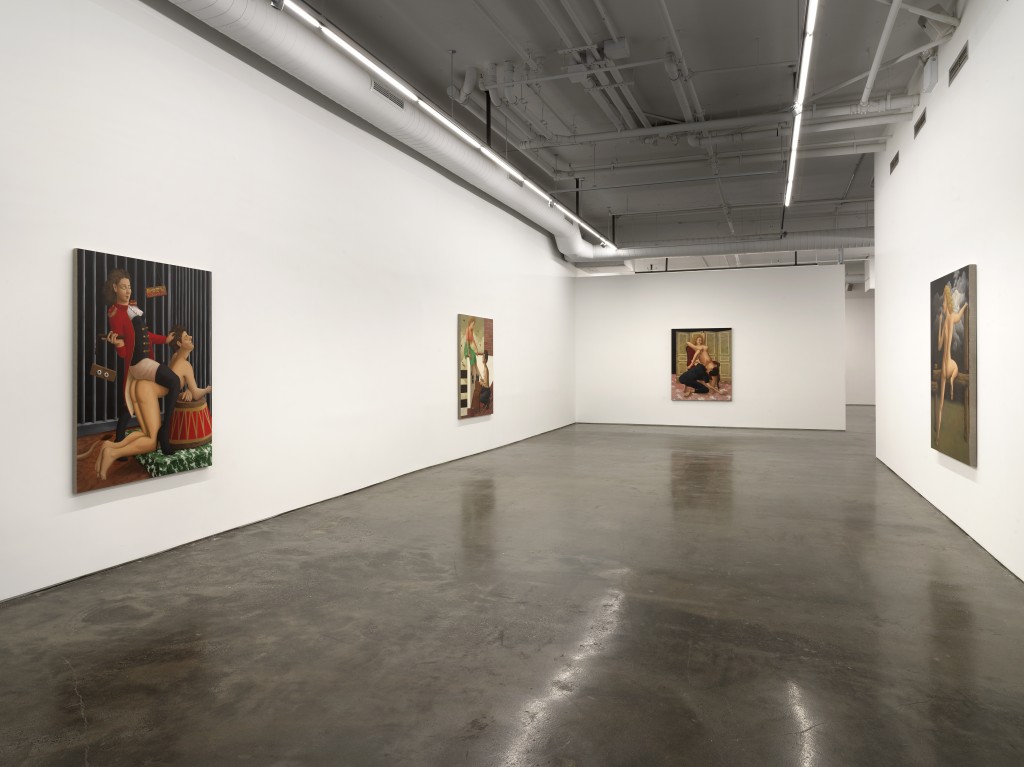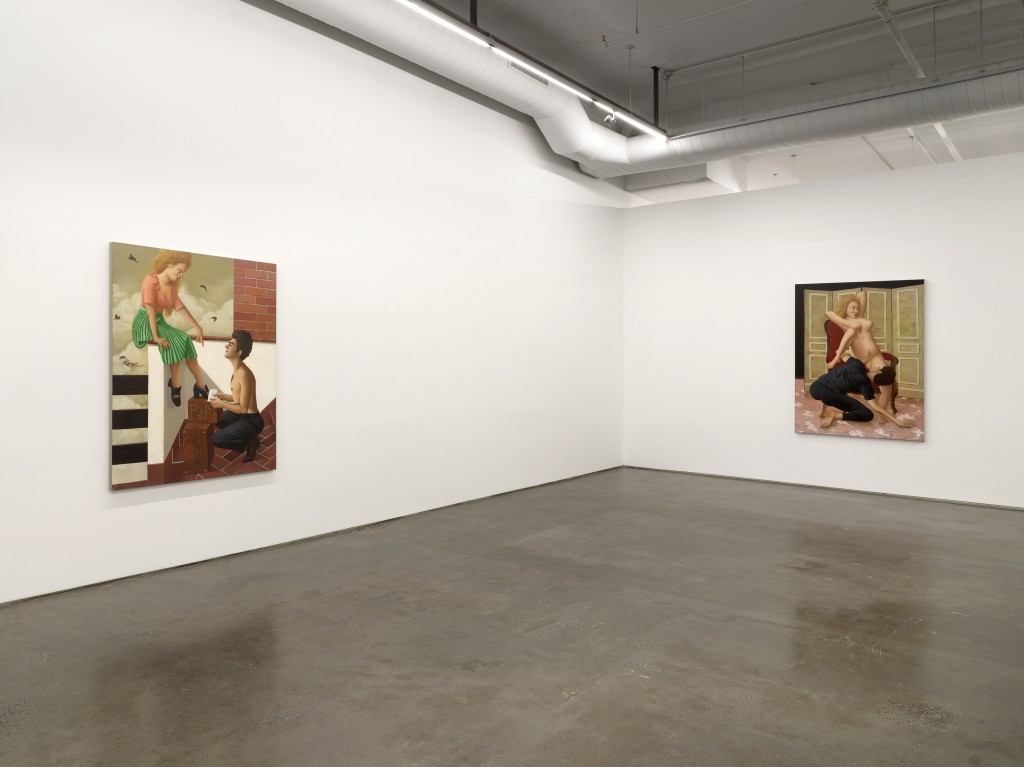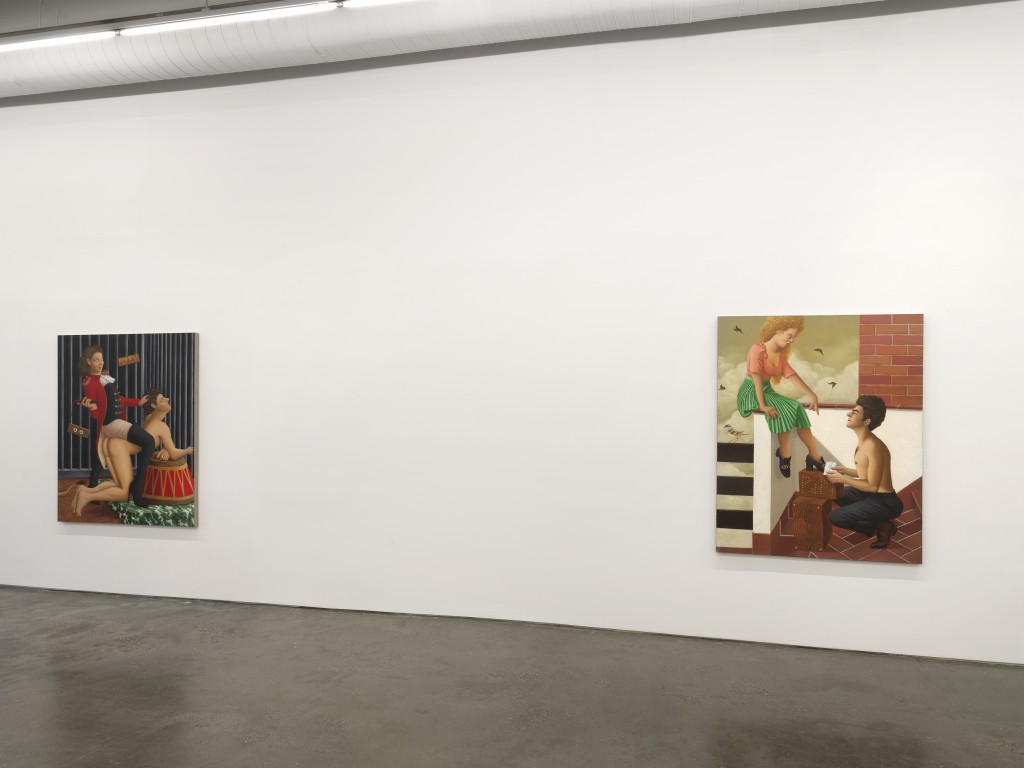Installation views
p
p
Cassina Projects and ARTUNER are delighted to introduce ‘Grim Tales’, a new group show opening on September 7th, 2017 at Cassina Projects, New York City, featuring the works of Malte Bruns, Jamie Fitzpatrick, and Patrizio Di Massimo.
Stories of bravery and horror, of villains, of misty full moons, of dark and mysterious rooms in ancient castles. No matterour age, the folktales collected by the Brothers Grimm in the 19th century never fail to enchant us. The power of these stories lies beyond their fantastic setting and awesome events: they are timeless and archetypal; they challenge our point of view and sense of morality. While an indispensable repository of folklore, because of their multi-layered and symbolic nature, these stories were historically perceived as subversive and potentially dangerous tools. Indeed they were, for they took their readers on a fantastical journey of darkness and discovery. It is only in contemporary works able to do the same that we can discover the skilled storytellers of our own modern times.
Malte Bruns, Patrizio Di Massimo, and Jamie Fitzpatrick weave visual narratives of power, desire, and dread through their artworks, often evoking an uncannily mysterious, playful, and yet serious atmosphere. Akin to fairy tales, the artworks featured in this exhibition offer more than what is visible on the surface: they hold a revealing mirror up to contemporary society. These three artists share a penchant for the garish and provocative: through the use of bold colors and tantalizing aesthetics, their artworks portray disconcerting human stereotypes as well as chimeric monsters. Like folktales, they present the audience with a metaphorical dark forest: a space for awe and dismay in which the viewer is forced to confront both collective and personal nightmares.
Jamie Fitzpatrick’s wax sculptures draw the viewer into a satirical vortex of subverted expectations about what the medium itself should look like. The sloppy application of the waxy material results in distorted and seemingly precarious features of the characters portrayed. Much like the anti-hero, Fitzpatrick’s could be regarded as anti-sculpture: it takes a stance against monumentality and permanence. It makes the audience question the moral stature and valor of these officials of the past, still towering above us atop of their pedestals, although the significance of their deeds has long been forgotten. These sculptures are riotous; they even refuse to remain immobile and be subdued by the gaze of the viewer: timed mechanical components that set off at irregular intervals make noise and attract the audience’s attention to different parts of the statue, thus dictating the viewing experience.
The enticing characters of Patrizio Di Massimo’s paintings hold their pose with classical perfection, the light caresses their smooth bodies drawing out every supple muscle, every sensuous dimple. The erotic tension perspiring from the works is further emphasized by the shroud of mystery enveloping the scenes: they could be performing acts from an unknown play, where the curtain has been pulled in medias res and the audience is left to wonder about the gestures’ meaning and their consequences. Indeed, like in a circus, the bodies of the performers become a site for spectacle and wonder. But rather than focusing on gravity-defying acrobatic feats, Di Massimo’s characters seem to challenge moral preconceptions and domestic roles through either stereotype or strangeness.
The atmosphere evoked by Malte Bruns’ sculptures is that of a terrifying dungeon in a sci-fi fantasy movie. His life-like and yet horribly wrong heads and torsos simultaneously attract and repel the viewer; blue capillary wires run like blood vessels underneath the artificial skin, tricking the beholder into perceiving the object as human. Unexpectedly, cables gush out of the mauled synthetic flesh, where the trompe l’oeil ends abruptly, just like the boundaries of a movie set. The sculptures pointedly conjure a feeling of uncanniness: as suggested by the German psychiatrist Ernst Jentsch in his pioneering 1906 essay on the subject, the Unheimlich may be triggered by too close a resemblance between art and nature, and the observer’s subsequent discovery that what once seemed life-like was, in fact, an automaton. Malte Bruns’ exploration of the thin line between artificiality and nature, between perfection and horror, serves as a stark reminder of our contemporary condition, one in which technological advancement in bionics could become as scary as the primordial fear of bodily decay.


